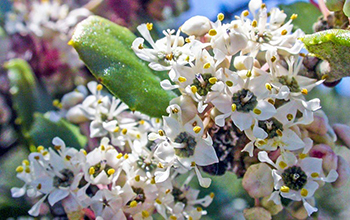
Research News
Trees remove black carbon, or soot, from the atmosphere
September 5, 2019
Researchers at the University of North Texas have found that two oak tree species, post oak and live oak, that are widespread across the U.S. South remove black carbon from the urban atmosphere. The findings may offer a natural way to improve climate and air quality.
The study, led by Alexandra Ponette-González, was conducted in Denton near Dallas-Fort Worth. The scientists measured the amount of black carbon particles captured by post oak and live oak trees, and the amount of the black carbon transported to the ground with falling leaves.
Black carbon, commonly referred to as soot in urban areas, is released directly into the atmosphere as a result of fossil fuel, biofuel and biomass burning; it is the second most important agent contributing to climate change. Black carbon also represents one of the most harmful components of fine particulate matter. When inhaled, black carbon can cause respiratory and cardiovascular problems.
The results, published in the journal Environmental Science & Technology, show that post oak trees capture approximately twice as much black carbon as live oak trees. The findings also indicate that post oak and live oak trees capture the most black carbon in the fall and winter, when black carbon air pollution is at its highest. The trees are filtering air when it is most beneficial to urban residents.
The research is funded by NSF’s Directorate for Social, Behavioral and Economic Sciences.
—
NSF Public Affairs,
(703) 292-7090 media@nsf.gov
Source: NSF News
Brought to you by China News







